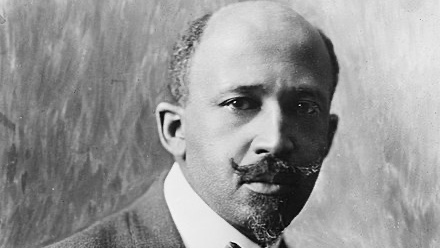
We know humans are living much longer than our ancestors a century ago, but what about our distant ancestors? Has 8,000 years of civilization improved average lifespans compared to our hunter-gatherer past? How we answered that question is a detective story—and a cautionary tale. 

(This story is told in my new book, Extra Life: A Short History Of Living Longer — also a PBS/BBC series co-hosted with @davidolusoga.) penguinrandomhouse.com/books/594501/e…
Meet Nancy Howell, a Harvard-educated sociologist, who traveled to Africa’s Kalahari desert in 1967 with her new husband to do fieldwork with the !Kung people, a hunter‐gatherer society that had been almost entirely isolated from all the conventions and technology of modern life. 

Already by that point, Western anthropologists had questioned the old Thomas Hobbes quip that pre-agrarian life was “solitary, poor, nasty, brutish and short.” Hunter-gatherers seemed to work shorter hours than Western societies, appeared healthy and happy with deep social bonds. 

But Howell was interested in the last of Hobbes’ adjectives: exactly how long were their lives compared to industrial-age societies? Had all the advances of medicine and public health moved the needle in terms of that basic measure of progress: how much time do you have to live?
But there was a problem. The !Kung had no written mortality records, or census data. Even more challenging: their entire numerical system topped out at the number three. Age was simply not concept that was expressed numerically.
So this was Howell’s problem: how do you measure life expectancy in a culture that doesn’t count years?
Howell ultimately cracked the case using… grammar!
Howell ultimately cracked the case using… grammar!
The !Kung turned out to a finely tuned sense of *relative* age. And that distinction was encoded in their spoken language. Just as French or Spanish encodes formal and informal direct address (“vous” vs “tu”) the !Kung grammar distinguished between older and younger people.
In effect, when a member of the !Kung uttered a statement along the lines of “Will you help me prepare this meal?” the actual meaning of the question would be: “Will you, younger person, help me prepare this meal?”
Howell knew the ages of many young children from interviews with their parents, which gave her a floor to build off of. She could listen to a six‐year‐old talk to friends and note which were greeted with the younger‐than‐me form of address, and which the older‐than‐me version.
By tracking this web of familial and social connections, Howell was able to build a kind of hierarchy: a ranked list of the population organized by age. The exact ages grew blurrier as the population thinned out at the older end of the spectrum. But it was close enough.
She ultimately calculated that a child born into !Kung society in the late 1960s could expect to live, on average, thirty‐five years, while the older generations had experienced a life expectancy of thirty years. More than a third of all children died before reaching adulthood.
Just to be clear, there were many grandparents and even great-grandparents in the !Kung society. Childhood deaths pulled the overall averages down dramatically. But even if you survived childhood, you were much less likely to live to 70 or 80 than you are today.
Now, that may *sound* like Hobbes was right—35 years is half the current global life expectancy of 72. But here’s the thing: almost all that extra life only arrived in the past century. When Hobbes wrote those words in the 1600s, British life expectancy was roughly 35 years too!
As far as we know, average life expectancy didn’t vary much from that 35 year ceiling for the ENTIRE history of human civilization, until the 1800s. Think of all the advances of “civilized” society during that period: none made a difference in extending life on a global scale.
In fact, the one big change that we do know happened is that life expectancy *plummeted* in the shift from hunter-gatherer lifestyles to sedentary agrarian societies, thanks to food shortages and infectious disease. Many early agricultural societies saw life expectancies below 20
And that’s a crucial lesson for us today, as global life expectancies retreat thanks to a pandemic and as a climate crisis grows around us. As a species, we have collectively made decisions that shortened our lives for thousands of years. There’s no reason it can’t happen again.
As for the question of how we managed to make that incredibly advance in human life over the past few centuries — well, for that, you’ll just have to read the book. (And watch the show!)
amazon.com/Extra-Life-His…
amazon.com/Extra-Life-His…
PS. Nancy Howell has several wonderful books about her research among the !Kung people, including this one. amazon.com/Life-Histories…
• • •
Missing some Tweet in this thread? You can try to
force a refresh





